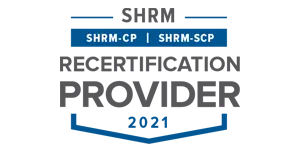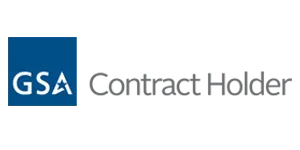G
-
Gage R&R.
When conducting the Measurement stage of DMAIC, Six Sigma Belts often use Gage R&R to evaluate their measurement systems’ accuracy. The R&R stands for repeatability and reproducibility, and the technique focuses on determining if you will receive multiple similar results from your measurement systems. Gage R&R comes out of the belief that you should categorize total measurement systems error in two different ways, repeatability and reproducibility. When using Gage R&R, you measure error with the following standard deviation, depending on your data. You can represent your data in a hierarchical diagram, like a family tree. The first box should contain your observed total for variation. The diagram should continue downward, part variation on one side and measurement system variation on the other. The latter should then split off toward repeatability and reproducibility.
-
Gantt Chart.
The Gantt chart is a type of chart used to display a breakdown of the tasks. You should list each task according to your priorities over time. Which tasks do you need to complete first? Number the first column for each task you are required to complete. The next should be labeled Activity and split into rows. Split he next section into columns for each month, week, or day, depending on your timeframe. Represent the length of time it takes (or should take) to complete a task using a horizontal color-coded line. You can use Gantt charts in process improvement projects and other team-based projects to organize and assign tasks. Project leaders, Black Belts, typically draw up Gantt charts for the rest of the team. Although even team members with others working under them, like Green Belts, may be required to make a Gantt chart.
-
Gap Analysis.
You will often have to analyze data in Six Sigma work, such as the gap between current performance and potential performance. This is where Gap Analysis should is useful. It is a strategic approach to can help you develop a plan to close the gaps between your two thresholds. Gap Analysis is also effective for other uses, such as analyzing product and market share. For Six Sigma practitioners, Gap Analysis is most often used to analyze the gap between current product performance and customer requirements.
H
-
Hill Climbing.
Black Belts and Green Belts use hill climbing in Experimental Design. Hill climbing helps determine the process settings that give you the maximum and minimum responses. Despite the name, hill climbing isn’t as strenuous as it sounds. You begin by carrying out an initial experiment. If it does not deliver either the maximum or minimum responses, then you find the path of steepest ascent and descent. Once you have this data compiled, you can then carry out another test at an interval point along your process path, continuing until it starts to ascend or descend. Then, an additional experiment around the highest point on the path will tell you if this is the maximum or minimum response. If you still haven’t found the path of steepest ascent by this point, all you have to do is continue until you do. It can take time, but hill climbing is very effective. Provided your curvature is not significant, then the experiments you conduct can be first order designs with center points. When your curvature becomes significant near the optimum, however, then you should change to response surface designs.
-
Histograms.
Histograms are a type of data tool in Six Sigma. Any Six Sigma practitioner may use a histogram when analyzing data values. This may include Black Belts, Green Belts, or Yellow Belts. Histograms work in process improvement projects or team-based activities. Histograms are graphical displays of your distribution of values for specific data sets. A histogram looks like a common bar chart, with an X and a Y axis, and bars of varying lengths representing your data. Each axis should be labeled appropriately, for instance, processing time and how many claims you have received.
-
Hypothesis Testing.
You can divide hypothesis testing into two complementary claims. If your test was to determine whether a process mean equals zero or not, you could describe them as follows. H0 (the mean equals zero – the null hypothesis) and H1 (the mean equals something other than zero – the alternate hypothesis). When testing to determine the probability of events occurring, hypothesis testing can be of great use to Six Sigma practitioners. When conducting intermediate to high-responsibility process improvement work, Green Belts or Black Belts will usually be most likely to use hypothesis testing. It is highly effective as it allows you to determine the likelihood of observed results, but only when the first claim, H0 is true. You should refer to your probability as the p-value. The smaller the p-value, the less feasible your null hypothesis.
I
-
Interest-Based Bargaining.
Interest-based bargaining will likely to come into play for team-based process improvement. IBB is a style of negotiation that focuses on finding a utilitarian solution. One that will serve the needs and interests of all the parties involved. In other words, a mutually beneficial negotiation, or win-win situation. Black Belt Six Sigma practitioners are usually required to negotiate with company champions, management, etc. As such, they are most likely to use interest-based There are five key characteristics to IBB, which are as follows:
- You should avoid bargaining over positions.
- Ensure the two negotiators are separated from the problem.
- You should focus on the interests, rather than the positions involved.
- Part of your negotiation should involve finding opportunities for mutual benefit.
- You should use objective criteria when selecting an appropriate resolution to the problem.
-
Interrelationship Diagram.
Interrelationship Diagrams are a type of affinity diagram. You can use them for team-based process improvement work. Anyone can make one, from Black Belts to Yellow Belts, though group leaders will usually take the reins. To use an interrelationship diagram, you first need to gather your ideas together. Then group them in a circular pattern on a whiteboard or flip chart. Then, draw arrows from each circle to other related ones, to show the relationships between each idea. Think about cause and effect, how each idea influences other ideas and is influenced by them. The arrows that lead to and away from each idea should be counted and tabulated. The highest number of away arrows from particular ideas represent your most important drivers. If you have a large number of arrows heading towards a particular idea, this suggests critical outcomes to take note of, as well as potential measures of success.









No responses / comments so far.